
Xylota segnis, The Brown-toed Forest Fly, is a common species of hoverfly.

Xylota sylvarum is a common Palearctic species of hoverfly.

Eupeodes luniger is a common species of hoverfly.

Criorhina berberina is a species of hoverfly. It is found in the Palaearctic from Fennoscandia South to Iberia and Italy. Ireland eastwards through Europe into Turkey and European Russia . C. berberina is a bumblebee mimic. The body has uniformly long dense pubescence, obscuring the ground-colour. There are two forms one with the pubescence more or less extensively blackish, one in which it is entirely yellow or tawny. Criorhina differ from other bumblebee mimics - Mallota, Arctophila, Pocota and Brachypalpus by the form of their antennae: the first segments are thin and form a stalk, the third segment is shorter than it is wide. In Criorhina, the face projects downwards, in contrast to Pocota and Brachypalpus.

Chrysogaster solstitialis is a European species of hoverfly.

Pelecocera is a Holarctic genus of Hoverflies, from the family Syrphidae, in the order Diptera. Antennae with segment 3 a half moon shape or triangular, in the female the arista very thick, spike-like, inserted at the anterior extremity of segment 3. They are small black and yellow or orange flies found mainly on heaths.
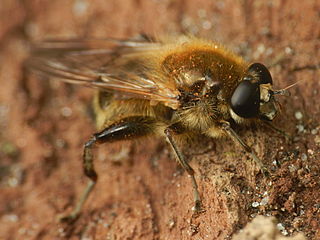
Brachypalpus is a genus of hoverflies, from the family Syrphidae, in the order Diptera. The head is triangular and produced well forwards and somewhat downwards. The thorax and abdomen with pile often rather long. The hind femur is swollen and with an obtuse spur apically and ventrally. The hind trochanters of male is spurred.
The larvae are of the rat-tailed type feeding on decaying sap under tree bark. Larvae live in decaying trees and logs. Larva and pupa have been described by Malloch.
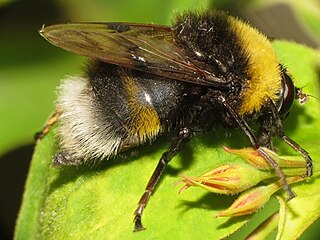
Pocota is a genus hoverflies, from the family Syrphidae, in the order Diptera.

Tropidia is a genus hoverflies, from the family Syrphidae, in the order Diptera.

Cheilosia albitarsis is an abundant European species of hoverfly. Adults can be found in spring visiting buttercup flowers and this plant is also the larval hostplant.
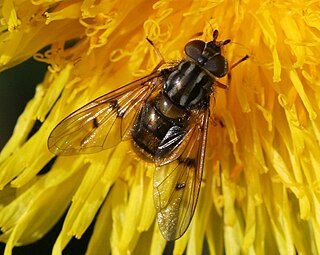
Ferdinandea cuprea is a European species of hoverfly notable for its brassy abdomen. The larvae have been found in sap from trunk damage on oak and ash.
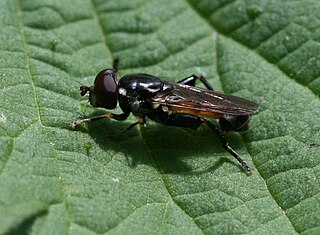
Tropidia scita is a common Palearctic species of hoverfly associated with wetlands, ponds and ditches. The larvae have been recorded living in the basal sheaths of Typha.

Criorhina floccosa, is a species of hoverfly. It is found in many parts of the Palearctic including Europe.
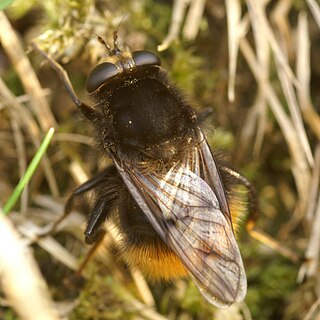
Criorhina ranunculi, is a species of hoverfly found in the spring in many parts of Britain and Europe.
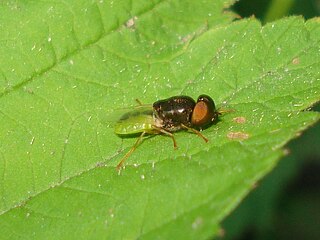
Odontomyia angulata, also called the orange-horned green colonel, is a European species of soldier fly.

Eumerus funeralis or lesser bulb fly is a species of Hoverfly, from the family Syrphidae, in the order Diptera. E. funeralis appears in Peck (1988) as a synonym of E. strigatus (Fallen), but was reinstated as the correct name for tuberculatus Rondani, sensu auctorum by Speight et al. (1998).

Xylota tarda is a Palearctic species of hoverfly.

Chrysogaster cemiteriorum is a European species of hoverfly which can be found feeding on umbelliferous flowers wetlands and damp meadows.

Sphegina clunipes is a Palearctic species of hoverfly.
Sphegina spheginea is a species of hoverfly in the family Syrphidae.



















